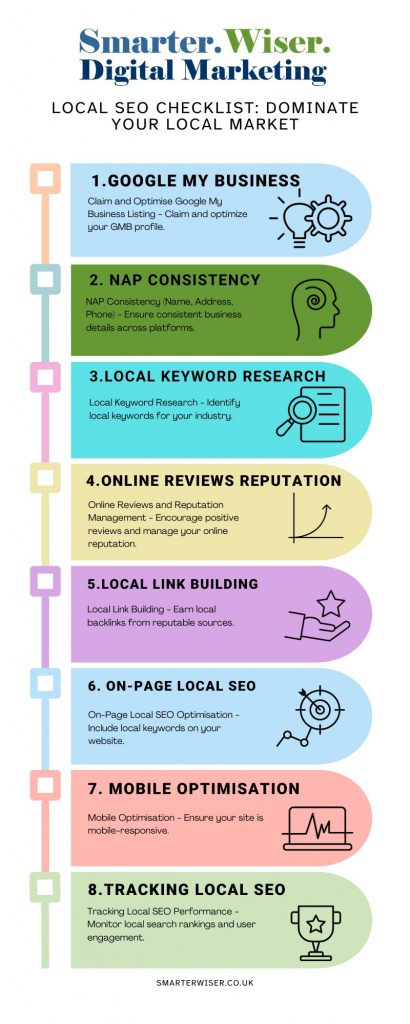Create beautiful websites with the help of a professional web design agency
Wiki Article
How Effective Website Design Can Improve Your Search Engine Optimization Approach and Improve Customer Experience
The junction of efficient web design and search engine optimization is a critical location for any type of company looking for to improve its on the internet presence. An instinctive style not only boosts individual experience but also dramatically influences SEO efficiency by reducing bounce prices and enhancing engagement metrics.Value of Website Design for SEO
Reliable web style is frequently ignored in its impact on search engine optimization (SEO) These variables add to lower bounce rates and greater user engagement, which are important metrics for SEO success. marketing agency for small business.Furthermore, website design elements such as clean code, enhanced pictures, and correct usage of HTML tags considerably affect a website's crawlability. Online search engine count on organized data to recognize web site content and context, making it important for internet designers to execute finest techniques. Additionally, the combination of SEO methods within the style stage, such as consisting of keywords in titles, meta descriptions, and alt message for photos, can boost presence in search engine result.
Inevitably, focusing on reliable website design not just makes sure a smooth individual experience however also establishes a strong structure for search engine optimization initiatives, causing enhanced organic traffic and improved positions. Hence, services have to acknowledge the innate link in between website design and SEO to achieve on-line success.
Key Layout Elements for User Experience
Customer experience (UX) serves as a keystone for successful internet style, influencing exactly how visitors engage with a site and regard its value. To maximize UX, several vital design components should be focused on.Firstly, instinctive navigation is crucial; a well-structured menu and clear paths allow individuals to find info promptly, decreasing aggravation. Second of all, aesthetic pecking order plays a critical role, assisting users' interest to vital elements with dimension, positioning, and color. This promotes quicker decision-making and enhances overall involvement.
In addition, a regular style motif improves experience and trust fund, as customers really feel more comfortable navigating a site that visually aligns throughout its pages. Effective use white space also can not be neglected; it avoids clutter, allowing essential content to attract attention and making the website extra absorbable.
In addition, high-quality photos and graphics are essential, as they not just record interest however likewise convey professionalism and trust. Finally, quick load times are non-negotiable; delays can bring about greater bounce rates and decreased user satisfaction. By concentrating on these crucial style elements, organizations can dramatically improve their user experience, cultivating favorable interactions that urge return sees and conversions.
Mobile Responsiveness and SEO Impact
As website design significantly prioritizes user experience, the value of mobile responsiveness can not be overstated. With a substantial part of internet traffic stemming from mobile phones, a responsive style ensures that internet sites are practical and available throughout different display sizes. This flexibility not only improves user fulfillment but likewise plays a critical duty in search engine optimization (SEARCH ENGINE OPTIMIZATION)
Integrating mobile responsiveness right into website design also fosters improved packing times, which is an essential aspect in both individual experience and search engine optimization positions. Slow-loading pages prevent customers, resulting in greater desertion prices and adversely influencing search presence. Eventually, focusing on mobile responsiveness not just enhances individual engagement yet also strengthens an internet site's SEO strategy, producing a much more affordable on-line visibility.
Site Framework and Navigating Ideal Practices
A well-organized site structure and instinctive navigating are necessary elements of successful website design. They not only boost individual experience but also play an essential function in search engine optimization (SEARCH ENGINE OPTIMIZATION) A clear power structure enables customers and internet search engine to comprehend the relationships in between different web pages, enhancing the total functionality of the site.Use descriptive and keyword-rich URLs, as they supply context and improve search exposure. This reduces bounce rates and maintains users involved.

Determining the Success of Internet Design
Measuring the success of website design entails reviewing various metrics that reflect user engagement and overall site performance. Key performance indicators (KPIs) such as bounce rate, typical session duration, and pages per session offer understanding right into exactly how individuals communicate with the site. A high bounce rate might show that customers are not locating the material appealing or appropriate, prompting a demand for layout or material modifications.Additionally, conversion rates are crucial for assessing the performance of website design. A boost in conversions, whether through form entries, product purchases, or e-newsletter sign-ups, commonly associates with intuitive design and user-centered capabilities. Tools like Google Analytics can provide detailed records on these metrics, allowing designers to recognize patterns and areas for renovation.
Individual feedback is an additional important component. Using studies and usability screening can reveal qualitative understandings into user experiences, assisting design changes that promote satisfaction. Inevitably, a combination of measurable data and qualitative responses establishes a thorough photo of internet style success, ensuring that it lines up with both SEO purposes and individual assumptions. By regularly gauging these elements, organizations can fine-tune their website design methods to maximize user experience and drive purposeful engagement.
Verdict

As internet design significantly prioritizes customer experience, the value of mobile responsiveness can not be overstated.Integrating mobile responsiveness into internet design likewise fosters enhanced loading times, which is a crucial element in both customer experience and SEO positions. Ultimately, a mix of quantitative data and qualitative responses establishes a thorough picture of internet layout success, making sure that it straightens with both SEO purposes and user expectations. By continually measuring these aspects, businesses can fine-tune their internet design techniques to maximize user experience and drive significant involvement.
In conclusion, efficient internet layout considerably improves Search engine optimization strategies and individual experience.
Report this wiki page